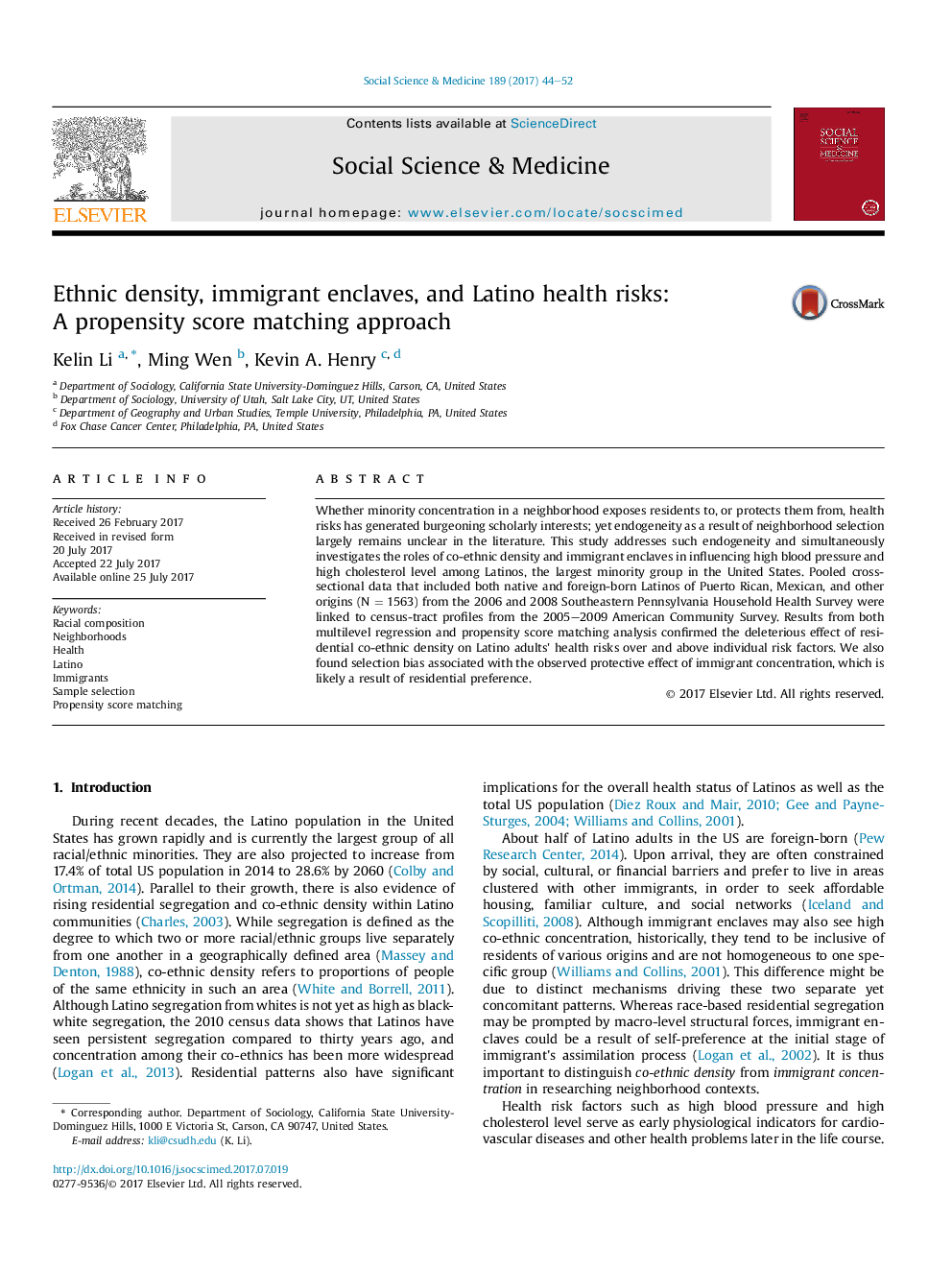| کد مقاله | کد نشریه | سال انتشار | مقاله انگلیسی | نسخه تمام متن |
|---|---|---|---|---|
| 5046428 | 1475980 | 2017 | 9 صفحه PDF | دانلود رایگان |
- We address the endogeneity from neighborhood selection using propensity score matching.
- We examine influences of co-ethnic density and immigrant concentration on Latinos' blood pressure and cholesterol level.
- The positive association between co-ethnic density and health risks was confirmed in propensity score analysis.
- Neighborhood selection may account for the observed negative association between immigrant concentration and health risks.
Whether minority concentration in a neighborhood exposes residents to, or protects them from, health risks has generated burgeoning scholarly interests; yet endogeneity as a result of neighborhood selection largely remains unclear in the literature. This study addresses such endogeneity and simultaneously investigates the roles of co-ethnic density and immigrant enclaves in influencing high blood pressure and high cholesterol level among Latinos, the largest minority group in the United States. Pooled cross-sectional data that included both native and foreign-born Latinos of Puerto Rican, Mexican, and other origins (NÂ =Â 1563) from the 2006 and 2008 Southeastern Pennsylvania Household Health Survey were linked to census-tract profiles from the 2005-2009 American Community Survey. Results from both multilevel regression and propensity score matching analysis confirmed the deleterious effect of residential co-ethnic density on Latino adults' health risks over and above individual risk factors. We also found selection bias associated with the observed protective effect of immigrant concentration, which is likely a result of residential preference.
Journal: Social Science & Medicine - Volume 189, September 2017, Pages 44-52
